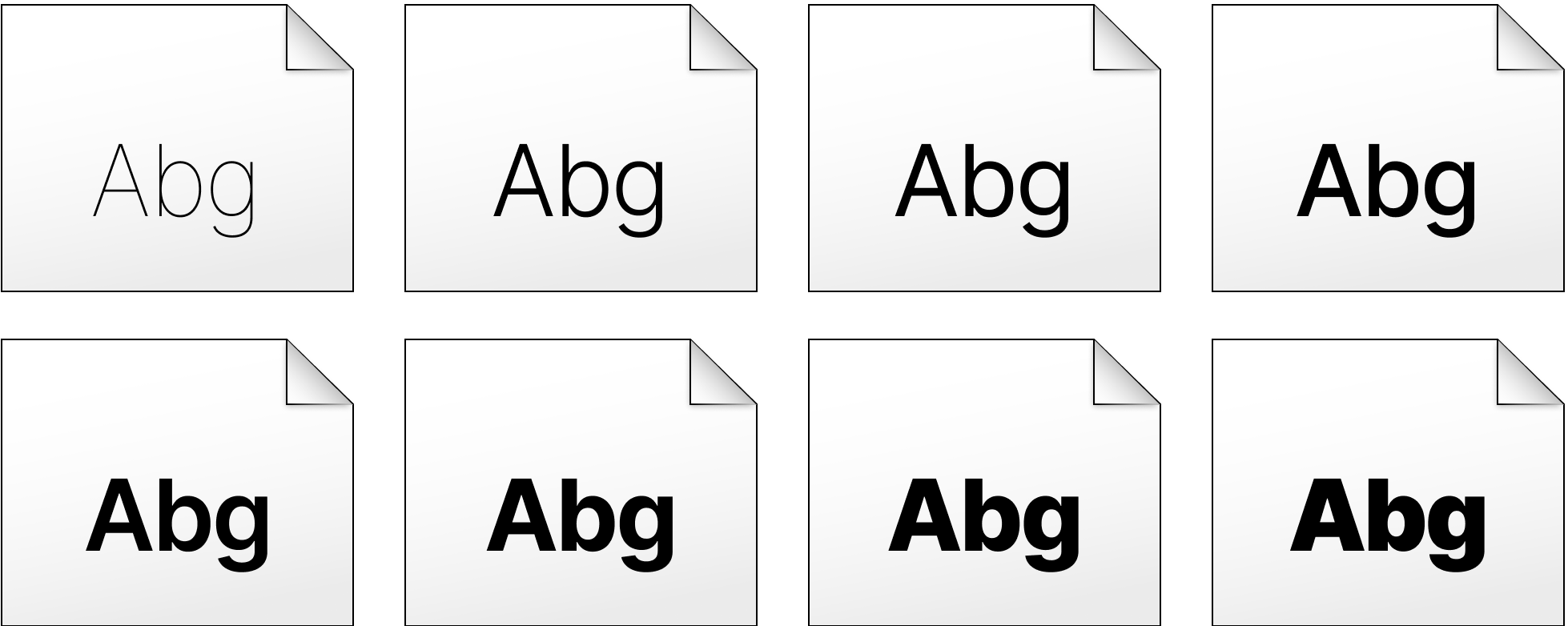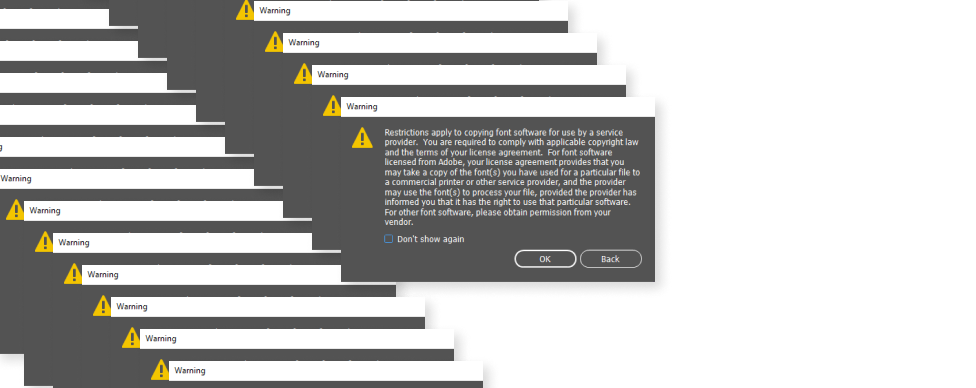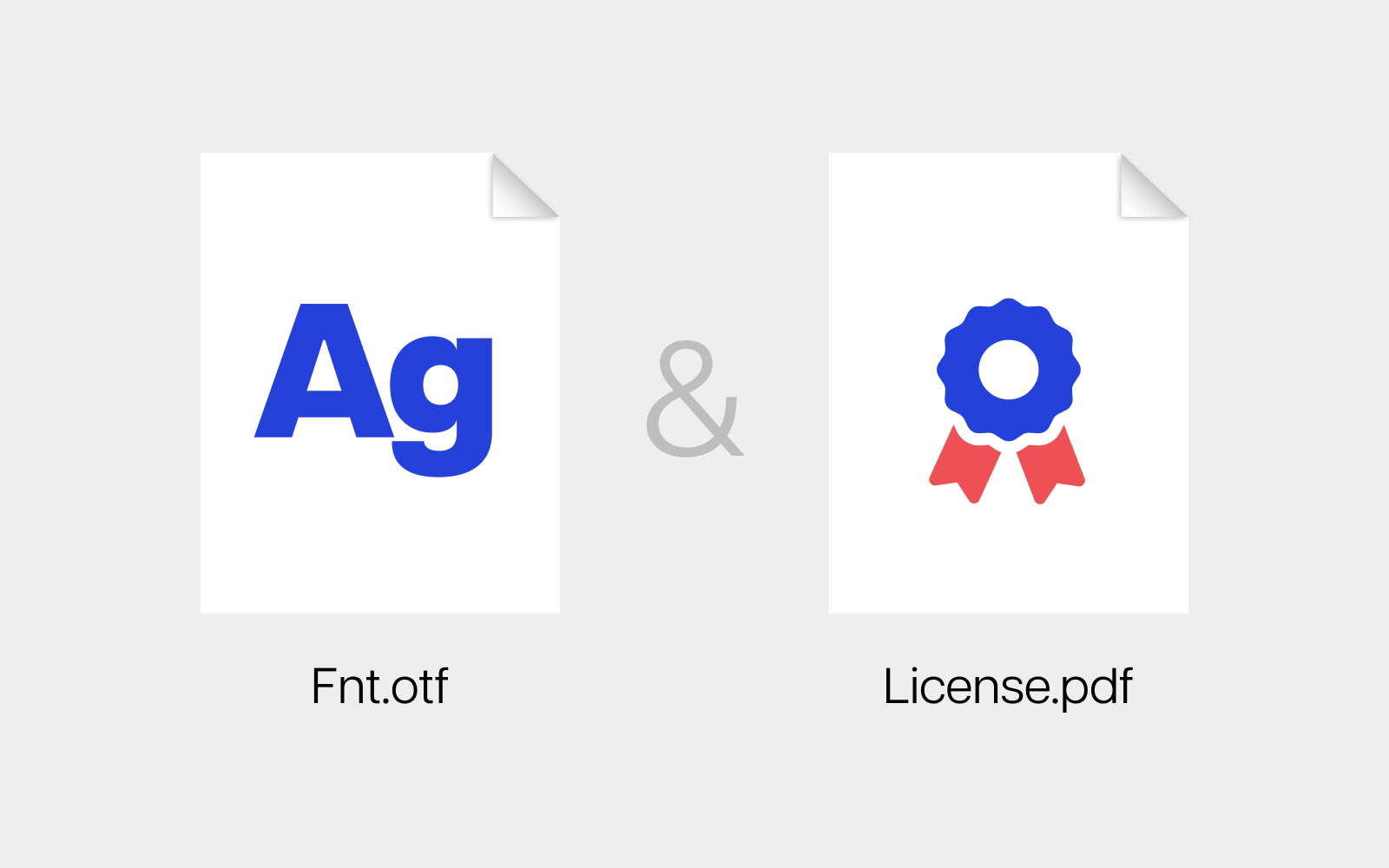Understanding font licensing, why it matters, and how to use fonts legally.
A font license is a legal agreement that governs the use and distribution of a specific font. It outlines the rights and restrictions associated with the font, including how it can be used, whether it can be modified, and how many devices or users are allowed to access it. Font licenses vary depending on the font foundry or designer and so it’s important to review and comply with the terms of a font license to ensure proper and legal use.

Why are there font licenses?
Put simply, fonts are software.
A font consists of digital files containing a collection of characters or symbols created by a third party who owns the intellectual property rights. Font licensing ensures that the font creator is compensated for their work – in the same way software developers are compensated for theirs.
Who needs one?
Well us, for one. When we’re designing any kind of visual content for clients, be it branding, a website, a logo, or an ad, we have to make sure that any font we choose is used legally and with the correct licensing, if it applies.
But, businesses, too, should check that the fonts used in their branding and associated visual materials complies with correct legal usage.

What happens otherwise?
There can be legal consequences for failing to comply with font licensing – this includes financial penalties and the removal of the infringing fonts. One notable instance of font law in practise was a lawsuit against NBC Universal by Font Bureau for use of one of their fonts without proper licensing. The case resulted in a settlement of $3.5 million(!!), which highlights the substantial financial risks associated with non-compliance.
Retroactive font licensing
Exactly as it sounds – it’s correcting a mistake by obtaining a license after the font has already been in use. It involves seeking permission from the font creator or type foundry to retrospectively legalise its use. By doing so, businesses (or individuals) recognise the problem, take steps to fix it, demonstrate good faith, and ensure compliance moving forward. Meanwhile, they avoid any legal issues down the track.
If it isn’t possible to obtain a retroactive license, then it’s probably better to replace the font with a licensed alternative than risk litigation in the future. And, considering the range of fonts available, it’s often the case that you can find something close, creatively, for it not to be too big a compromise. You can always return to the $3.5 million example when you’re weighing up that choice.
Different types of font licenses
To determine the appropriate licensing type, you must consider how a font will be used.
1 – Limited licence
This means obtaining a font licence for use within a single format – desktop, webfont, or other media (such as mobile apps, digital ads, video and broadcast, and eBooks).
- A desktop font licence grants the user the right to install and use a font on a specific number of computers or devices. It’s typically designed for personal or small-scale use on a limited number of devices within a defined scope – such as for personal use, or within a specific organisation.Desktop fonts can be installed on a computer, but cannot be used as a webfont or to replace a webfont. They are often in .otf and .ttf formats.
- A webfont licence grants the user the right to embed and use a font on a website or web application. It allows web developers and designers to utilise custom fonts in their web projects, ensuring consistent and visually appealing typography across different browsers and devices.Unlike desktop font licences that cover installation on specific devices, webfont licences are tailored for online use. They typically involve embedding the font files into the website code using CSS or other web technologies. This allows the font to be dynamically loaded and displayed on web pages when accessed by visitors.Webfont licences often have specific terms and restrictions related to the number of domains or websites the font can be used on, monthly pageviews or traffic limits, and whether the licence permits modification or redistribution of the font files. These terms vary depending on the type foundry or licensing agreement.Webfonts are often in .woff and .woff2 formats.
- An e-pub licence allows a font to be used in a single title or publication, typically in electronic book formats. Notably, e-pub licences enable font embedding, particularly in applications like Adobe InDesign, where fonts are embedded and cannot be extracted, enhancing the reading experience.
- App licences encompass font embedding in various scenarios. They cover non-extractable font embedding in desktop applications, games, and mobile apps. App licences allow fonts to be incorporated seamlessly within these applications, ensuring a consistent and immersive user experience.
2 – All-in-one licence
As it sounds, it grants access to all of the above uses at once.
3 – Custom Licence
A customised licence designed for more specific usage.
4 – Trial Licence
Most type foundries issue free trial licences. They allow a sole person the ability to install a font on one computer and use it for non-commercial purposes, in the context of trialling it.
5 – Open-source licences
Open-Source Licences are FREE to use for personal and commercial projects.
Google Fonts is the best place to find good quality open-source fonts.
Tips for good font practise
- Source fonts from reputable providers.
- Review the end user license agreement (EULA) for every font to ensure you understand its terms of use – and any restrictions.
- Check and record – do an audit of your font usage to understand exactly what you’re using and how; then check it against your EULAs.
- Or, if you are a business, consider partnering with a digital agency – like us – who already has a handle on this stuff so you don’t need to worry.


